Rediscovering Great German Wines
By Master of Wine, Christopher Burr
17/07/2022

I have had the pleasure over the last week or so to be giving wine lectures upon a delightful river cruiser travelling up the Rhine and Mosel Rivers, and visiting some of the most celebrated wine- producing vineyards in the world.
German wines have a varied history with British consumers. At the time of Queen Victoria and following her marriage to Prince Albert of Saxe Coberg Gotha, wines from the Rhine and Mosel rivers were extremely fashionable. Indeed the best fetched higher prices than Grande Cru Burgundy or 1st Growth Bordeaux at auction at that time. Sparkling Mosel had bigger sales than Champagne in Victorian England. There is a statue of Queen Victoria in the vineyards given her name following her visit there, Hocheimer Victoriaberg, and the wine in the famous tall brown bottle was always called Hock, with the tall green bottle reserved for Mosel wines.
Sparkling Mosel had bigger sales than Champagne in Victorian England
There are a number of different grapes grown around Germany, grapes designed or found to ripen well in this most northern climate. But the greatest white wines are made from the wonderful Riesling grape, which accounts for over 90% of Rhine and Mosel wines.
In the 1960’s and through to the early 1990’s, the most drunk whites in the UK were German in a boom period for Germany. Many will remember the famous Liebfraumilch, and big brands like Deinhard Green Label, Blue Nun and Black Tower. Also wines like Piesporter Michaelsberg, and Rudesheimer Rosengarten were popular, and every UK wine merchant had a good selection.
They did well mainly because these wines were better made and more quality stable than many other wines on the market, they were relatively good value, and they met the slightly sweet palate of the market at that time.
So why did they fall so out of fashion? Although most supermarkets still have a Liebfraumilch lurking on a bottom shelf somewhere, the only brand left in most supermarkets is Black Tower, not at all bad and at £5.50 most often, good value. Still medium dry, or even medium sweet.
Most recent retail selections have been small, but there are signs of some growth again.
Although most supermarkets still have a Liebfraumilch lurking on a bottom shelf somewhere, the only brand left in most supermarkets is Black Tower
The first and main reason for un-fashionability was the ubiquitousness of Liebfraumilch. Liebfraumilch was effectively a “brand” everyone knew. It was slightly sweet, inexpensive often under £3 or £4, but with little complexity. iI was in effect a simple beverage, like a sort of cheap lager or Cola of wine.
Secondly, palates were changing to a much dryer style of wine, look at the huge growth since the 1990’s of Pinot Grigio and Sauvignon Blanc. Slightly sweet was seen as a bit “naff” and unsophisticated. The decline in sweetish Anjou Rose and Asti Spumante happened at the same time.
Thirdly German wine labelling was unintelligible to most people. This is particularly the case for the better German wines, so consumers were put off from trading up to better qualities.
For example a German wine label will generally start with the village or commune name, Bernkasteler for instance. Then the vineyard name, Badstube as an example. Then probably the grape, so Riesling in this case. Then the quality classification, which can be quite complex depending upon the sugar levels in the unfermented grape juice, so could be Qualitatswein mit Pradikat, then could be Kabinett, Spatlese, Auslese, and if fermented dry or semi-dry, followed by troken or Halbtroken. Then, if still sweeter Beerenauslese, or the sweetest, rarest Trokenbeerenauslese. And if it has been picked after three days hard frost it can be called Eiswein, or Icewine as the Canadian who make it in Niagara call it.
Then it will have the vintage, that could be on a separate neck-label. And if that all is not confusing enough, at the bottom of the label will be the vineyard proprietor.
Until recently most of the big supermarket chains had a tiny range of German wines, but changes in the styles and types of wines being made in Germany, and a new generation of “post Blue Nun” consumers have made some encouraging changes.
GERMAN REDS
Firstly there are some delicious reds being made mainly in the Rheinhessen from the Pinot Noir grape, called Spatburgunder in Germany. With red Burgundy now so expensive, these are offering lovely light summery Pinot Noirs at great value.
Sainsbury’s, who in their recent magazine had an article “Why German wine is cool again”, have a very good light, elegant “Taste the Difference” Rheinhessen Pinot Noir at £8. But quite a small selection of other wines.
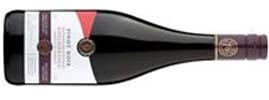
DRY GERMAN WHITES
The Germans are now also making delicious crisp, dry or “trocken” wines, which retailers are beginning to stock.
Tescos in their “Finest” range have a good dry Mosel Riesling called Finest Mosel Steep Slopes, made by a good longstanding producer called Peter Mertes. It is dry and crisp, and from the slate steep slopes of the Mosel it has a complex bite of salty minerality to balance the dry crisp apple and citrus fruitiness. At £7, it represents great value.
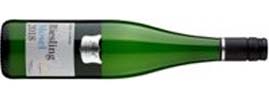
Tescos now have seven German wines on their shelves including a sound own label Tesco’s Riesling for £5.00, but this is not bone dry, but medium dry.
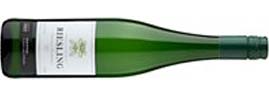
FOOD TRENDS AND GERMAN WINES
Perhaps another reason for a revival is the fact that medium and sweetish German wines go so well with spicy foods and also cheeses. A little bit of residual sugar counters and balances the spiciness in Thai, and Chinese dishes and also in curries. It also works extremely well with Sushi, and a good cheese board. Many of these wines are also some of the lowest in alcohol on the market, as low as 7.5%and 8%. This makes them easier to consume with these spicy dishes than heavier wines. Perhaps this is why there is a fast growing market for top German wines in the United States.
The best retail range of all for German wines is at Waitrose who now have 26 wines on their shelves, starting with their own label excellent Blueprint German Dry Riesling from the Mosel at £7.99, and Kendermann’s Special Edition (medium) Riesling for £5.99. In the middle price range, the very savvy Dr Ernie Loosen, is marketing an excellent Mosel Riesling which dispenses with all the confusing names, and is just called Grey Slate Riesling. Lovely bright apple and ripe citrus fruit with a mid palate of slate minerality. £7.99.
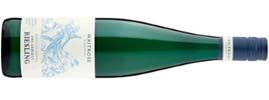
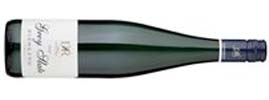
Then they have a great range of wines with ever complex names, and also some extraordinary sweet wines in 50cl and 17.5cl bottles like Dr Loosen’s Mosel Riesling Eiswein from frozen grapes picked in mid winter, £19.99 for this rare beauty.
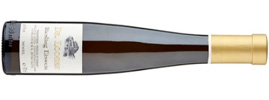
Waitrose also have three German Pinot Noirs. I would pick the Johann Wolf Pinot at £9.99, for lovely gentle soft berry fruit, raspberries and ripe strawberries.
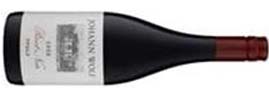
But my pick of the great selection at Waitrose is a really refined and complex medium sweet wine, an Auslese which is German for late harvest. It is Willi Haag’s Brauenberg Juffer-Sonnenhuhr Riesling Auslese 2020, and only 7.5% alcohol at £15.99. I am sorry about the long name!
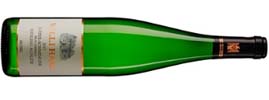
This wine is arguably far too young, and will be great in five to ten years, but I suspect that most will plan drinking now, so decant the bottle and let it breath in a cool place for several hours, or stick the decanter in the fridge and even drink the following day. Also try it with a good mild chicken curry or some sushi and sashimi, or a plate of good cheeses. At 7.5% it should slip down wonderfully.